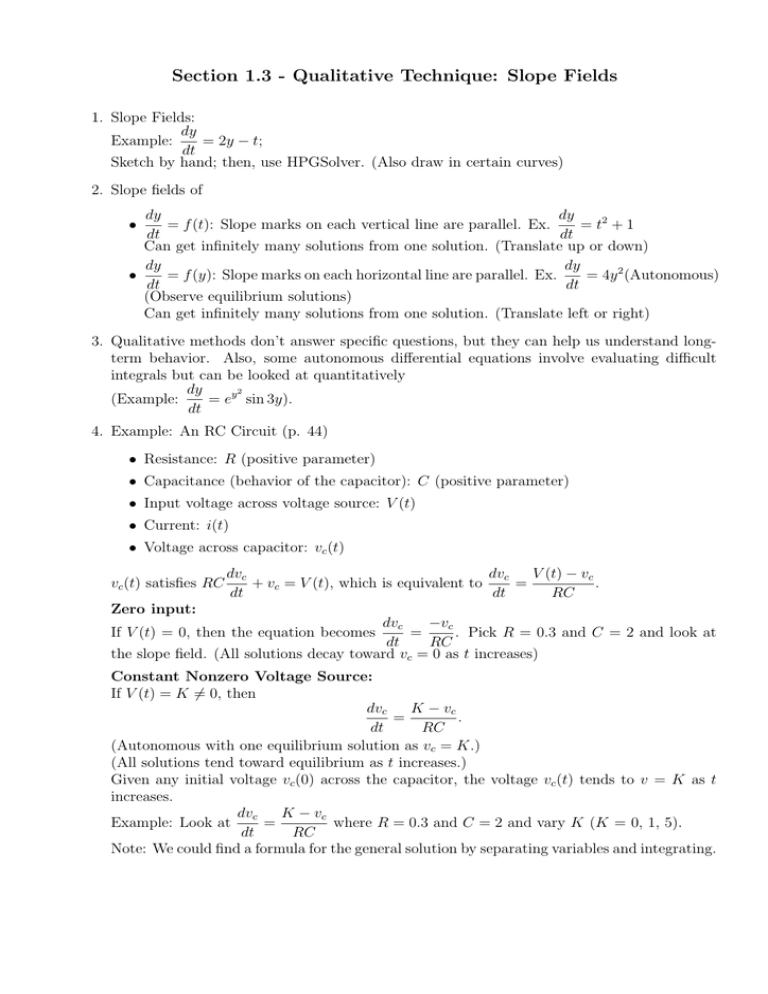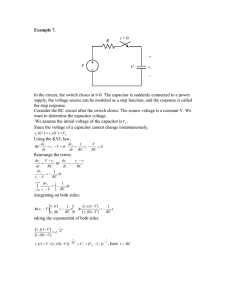Section 1.3 - Qualitative Technique: Slope Fields
advertisement

Section 1.3 - Qualitative Technique: Slope Fields 1. Slope Fields: dy Example: = 2y − t; dt Sketch by hand; then, use HPGSolver. (Also draw in certain curves) 2. Slope fields of dy dy = f (t): Slope marks on each vertical line are parallel. Ex. = t2 + 1 dt dt Can get infinitely many solutions from one solution. (Translate up or down) dy dy • = f (y): Slope marks on each horizontal line are parallel. Ex. = 4y 2 (Autonomous) dt dt (Observe equilibrium solutions) Can get infinitely many solutions from one solution. (Translate left or right) • 3. Qualitative methods don’t answer specific questions, but they can help us understand longterm behavior. Also, some autonomous differential equations involve evaluating difficult integrals but can be looked at quantitatively dy 2 = ey sin 3y). (Example: dt 4. Example: An RC Circuit (p. 44) • Resistance: R (positive parameter) • Capacitance (behavior of the capacitor): C (positive parameter) • Input voltage across voltage source: V (t) • Current: i(t) • Voltage across capacitor: vc (t) vc (t) satisfies RC dvc dvc V (t) − vc + vc = V (t), which is equivalent to = . dt dt RC Zero input: dvc −vc = . Pick R = 0.3 and C = 2 and look at dt RC the slope field. (All solutions decay toward vc = 0 as t increases) If V (t) = 0, then the equation becomes Constant Nonzero Voltage Source: If V (t) = K 6= 0, then K − vc dvc = . dt RC (Autonomous with one equilibrium solution as vc = K.) (All solutions tend toward equilibrium as t increases.) Given any initial voltage vc (0) across the capacitor, the voltage vc (t) tends to v = K as t increases. K − vc dvc = where R = 0.3 and C = 2 and vary K (K = 0, 1, 5). Example: Look at dt RC Note: We could find a formula for the general solution by separating variables and integrating.

